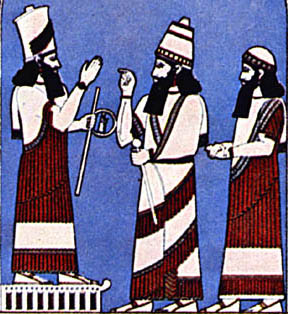News
Notification of 13th November 2025
Cancellation of lecture on 18th November 2025 - Colloquium on the Ancient Near East
Due to illness, the lecture by Dr.des. Christoph Fink on 18th November 2025 has to be cancelled.
It will be caught up on at a later point.
--------------------------------------
Notification of 7th October 2025
Colloquium on the Ancient Near East in the winter term of 2025/26
The colloquium on the Ancient Near East starts on 13th October 2025: Tuesdays from 6:15 - 7:45 pm, main building A119
------------------------------------------
Notification of 29th September 2025
Change of Date Monday Lecture with Prof. Adelheid Otto in the Winter Term 2025/26
The lecture "Altorientalische Großreiche", Monday 4-6 pm c.t. in room M114 main building,
! starts already on 13th October and has to be cancelled on 20th October due to the official welcoming event for new students !
--------------------------------------
Notification of 13th August 2025
Lectures in Winter Term 2025/26
you will find all current lectures and further information under "Studying and Teaching"
Short Overview Lectures
Commented Lectures
Lecturing Schedule
----------------------------------
Notification of 26th May 2025
Interview with Prof. Adelheid Otto in the news magazine "Tagesschau" on 3rd May 2025
"Auf der Suche nach Noahs Arche - und was Archäologen dazu sagen"
(In search of Noah's Ark - and what archaeologists have to say about this")
https://www.tagesschau.de/wissen/forschung/arche-noah-100.html?at_medium=tagesschau&at_campaign=Mail&at_content=SiteSharing
----------------------------------
Notification of 8th April 2025
Colloquium on the Ancient Near East
Programme for the summer term of 2025
-----------------------------------------
Notification of 22nd February 2025
Lectures in Summer Term 2025
you will find all current lectures under "Studying and Teaching"
--------------------------------------------
Notification of 12th December 2024
Long-term Academy Project on the Research on Seals and Seal Impressions starts in 2025
In spring 2025, the Academy Project KIŠIB. Digital Corpus of Ancient West Asian Seals and Sealings will be launched at the Institute of for Near Eastern Archaeology.
The jointly realised academy project of the Bavarian Academy of Sciences and Humanities (BAdW) in Munich and the Berlin-Brandenburg Academy of Sciences and Humanities (BBAW) in Berlin is allotted to two institutes, one at the Ludwig-Maximilians-Universität Munich (under the direction of Prof. Dr. Adelheid Otto) and one at the Freie Universität Berlin (under the direction of Prof. Dr. Elisa Roßberger).
Within the specified project duration of 16 years, the interdisciplinary team of researchers in Near Eastern Archaeology, Assyriology, Digital Humanities, and IT will study and establish a representative digital corpus of ca. 80,000 seals and generate a well-structured annotated dataset of the seals’ pictorial and textual components.
KIŠIB as Sumerian word for „seal“ refers both to the artefacts used for sealing and to sealed clay closures and cuneiform tablets. The project focuses on the seals and sealings from the 4th to the 1st millennium BCE, which form the largest and only continuously documented pictorial corpus of Ancient Western Asia. The fascinatingly varied and rich miniature representations and inscriptions carved into the seals enable detailed insight into ancient networks of social, political, economic, religious, and artistic interaction, and also into the transfer of cultural knowledge, evolving forms of visual communication, and changing ideologies.
In order to process any kind of queries to the database, the artefact-, picture- and text-related data are collected, segmented and annotated by means of machine learning. The thus created structured and commented data set of pictorial and text elements of seals is merged with seal-related data from various sources, in close cooperation with seal-owning institutions, other projects in digital Ancient Oriental studies, as well as with colleagues from Western Asian countries and worldwide.

-----------------------------------
Notification of 19th July 2024
New Vitrine of the NEA-Institute:
„Ancient Near Eastern Stamp and Cylinder Seals.“
In the Foyer on the 4th floor of the Historicum
you will find a new Vitrine
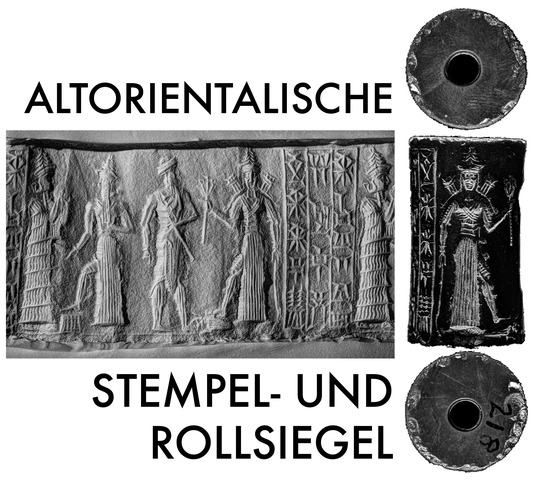
There you can explore the significance and the artistry of cylinder seals with the help of 3D-prints.
The enlarged prints and the direct contact with the seals enable you to totally immerse in the imagery of the Ancient Near East.
The exhibition was created within the frameworkd of the seminar:
„Der erste Eindruck zählt. Arbeiten mit Stempel- und Rollsiegeln“ ("The fist impression counts. Working with stamp and cylinder seals") in the summer term of 2024 under the supervision of Dr. Albert Dietz.
Design of the vitrine by:
Eda Nur Avsaroğlu, Dennis Busch, Cyrill Dankwardt, Johanna Klose,
Valentina Matt, Emily Mayr, Franziska Schmitt, Dr. Samar Shammas and Julia Steiger.
We are looking forward to your visit!
---------------------------------
Notification of 3rd May 2024
International Workshop
RESULTS OF THE RECENT EXCAVATIONS IN UR, IRAQ (2015–2022)
25.–26.07.2024
Workshop organisation: Prof. Dr. Adelheid Otto and Dr. Albert Dietz
In the rooms of the Carl Friedrich von Siemens Foundation,
Südliches Schlossrondell 23, Nymphenburg, München
Programme is subject to changes
----------------------------------------
Notification of 15th February 2024
New Book release by Adelheid Otto: ENTRE LES FLEUVES - III
A. Otto/N. Ziegler (eds.) 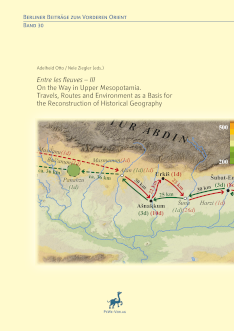
Entre les fleuves – III
On the Way in Upper Mesopotamia. Travels, Routes and Environment as a Basis for the Reconstruction of Historical Geography.
Berliner Beiträge zum Vorderen Orient, Band 30
Format: 21 x 29,7 cm — Hardcover
Volume: 252 pages
ISBN: 978-3-935012-64-5
Price: 59,00 €
© PeWe-Verlag 2023
Link for further information
------------------------------------------------------------
LRZ-Newsletter 9/2023 dated 14th December 2023
https://www.lrz.de/presse/ereignisse/2023-12-10-Sin-Nadas-House/
How wealthy people lived 4000 years ago
16 rooms on two floors, sophisticated sewage installations and even a bathroom with a lowered drain: together with archaeologists from the Ludwig Maximilian University of Munich, the LRZ has has visualised and reconstructed in virtual realityan ancient Babylonian villa dating from around 2000 BC.
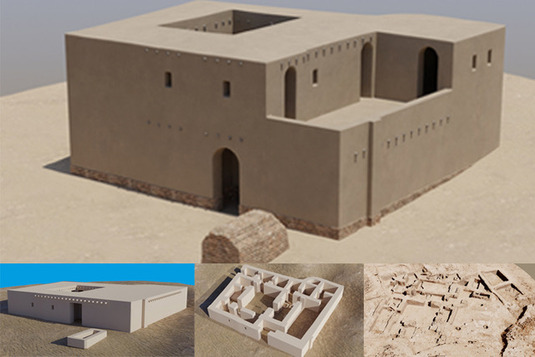
From the excavation to the model: The photo (below right) of the excavation site in Ur was the basis for the photogrammetry model (below centre)
as well as the model of the ground floor and the entire house (above). Photo: LMU/LRZ
First, a rather narrow corridor with grey, roughcast walls leads into a hall, from which a kitchen with two ovens and a bathroom with a lower drain behind an extra wall can be reached. Some rooms are flooded with sunlight through the courtyard at the centre of the villa. "This house seems so normal, but it was built around 1850 BC in the city of Ur and is over 4,000 years old," says Adelheid Otto, professor of archaeology and director of the Institute of Near Eastern Archaeology at Ludwig Maximilian University (LMU) in Munich. "At that time, people in Bavaria or Central Europe were still living in caves or on trees, but in Ur there were already fully paved baths with separate toilets".
The comparatively high rooms with dark grey, roughly plastered walls look real, but were digitally reconstructed at the Leibniz Supercomputing Centre (LRZ) and set up in virtual reality (VR). "Virtual reality is something new that we can now use in our subject for teaching and research," says Otto. "With digital models, we can also make our findings accessible to the public and visualise ways of life. There is so much we can learn from the past. The villa of Sîn-nada, the guardian of the Ningal Temple in Ur, not only reveals an advanced civilisation in which men and women could read and write, lived very hygienically and ate a healthy diet, but also demonstrates the longevity and contemporary benefits of earthen building: "Clay bricks keep houses cool, and most of them have survived for more than 4,000 years," explains Otto.
Modelling from photos, sketches and plans
For two years, LRZ experts from the Centre for Visualisation and Virtual Reality (V2C) worked with the archaeologists to digitally reconstruct Sîn-nada's villa. At first glance, the rooms appear cramped, but those who experience the rooms in VR quickly realise that Sîn-nada lived in spacious, stately conditions with his wife Nuṭṭuptum, who taught, fattened sheep and brewed beer. "The house had 16 rooms on two floors and a total area of 236 square metres," explains Dr. Berthold Einwag, who coordinated the digitisation project. "We know from letters and other evidence that the house was lavishly furnished and that sacrificial rituals were performed here for the temple community.
Photos, sketches and plan drawings that Otto and Einwag's team were able to collect during two excavations in 2017 and 2019 helped with the digitisation. Ur is located in southern Iraq and was discovered and partially excavated by British archaeologist Leonard Woolley in the 1920s. "In the past, excavations were carried out differently to today. In those days, you had two scientists and 400 workers, and they paid little attention to where things were and had no interest in the use of the houses, their furnishings and their way of life," Otto explains. "But that's exactly what we were interested in, exploring every millimetre of the villa, documenting exactly where the remains of walls, doors and the collapse of the upper floor were and, of course, looking for fragments, inscriptions, seals and rubbish". With each detail, the picture of the villa and the way of life on the southern walled enclosure of Ur became more precise and varied, and the realisation grew that rich people with large households tended to live around the temple of Nigal. Sîn-nada, for example, travelled widely, and his wife supervised many servants and looked after visitors to the temple.
Designing a historic building in exchange
"We developed the digital reconstruction with the LRZ in a constant back-and-forth process," says Einwag. Images and floor plans formed the basis for an initial 3D model using photogrammetry. "We had only vague clues about the structure of the building and couldn't interpret all the images of the excavation site accurately, so we had to keep asking questions and clarifying our work with the team of archaeologists," adds Kristian Weinand, then a student at the LRZ and now a 3D artist. "We calculated a 3D model from the photos using Autodesk ReCap software, which gave us a more precise idea of the house and the site". The villa was then rendered step by step using Blender software to create textures for the walls, floors and lighting. Finally, Unreal Engine 5 was used to translate this detailed model into VR. "The result was a render video and a VR application for the LRZ CAVE," says Dr Thomas Odaker. "This in turn can be used to derive applications for use with head-mounted displays, while the villa and its surroundings can be brought to life with images of people and objects." This would make it easier to assess the spatial and dimensional relationships in the villa and to visualise the way of life documented in letters and other evidence. "The digital model can now be demonstrated," says archaeologist Otto, "but it's certainly not a final product, we want to and should develop it further - at least the virtual tour of the house should be set to music or written down". However, sponsors and supporters are needed to fund this project, which would be possible thanks to the many finds and documents from the excavation. "Students will be able to work with the model using head-mounted displays," says Otto, "and we will be able to clarify working hypotheses in the digital model - for example, about the lighting conditions in the rooms, the number of windows, the position of doors, but also about life in this villa" (vs/ssc, LRZ)
----------------------------------------------
Announcement of 22nd November 2023
Alterations to the Colloquium Programme on the Ancient Near East
- The lecture by Prof. Suzanne Herbordt (Leipzig) on 21st November has to be cancelled
- Fiammetta Gori (LMU) holds her lecture instead on 21st November
- Prof. emer. Michael Roaf (LMU) will give an lecture on 28th November about: "The measurement of Sargon’s name and the astroglyphs of Esarhaddon and Sargon II".
---------------------------------------------
Announcement of 6th November 2023
Two more new publications of the MAAO-series:
- Volume 9 "Weights and Measures as a Window on Ancient Near Eastern Societies" by Adelheid Otto + Grégory Chambon (eds.)
- Volume 10 "Tell el-Yahudiyeh Ware in the Northern Levant" by Samar Shammas
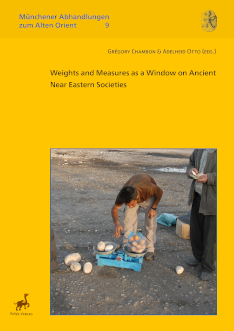
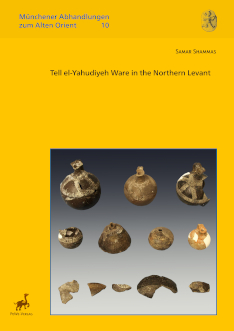
further information further information
---------------------------------------
Announcement of 20th July 2023
New publication of the MAAO-series: Volume 8 "Der Wettergott im Bild"
by Albert Dietz
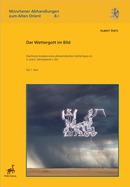
More Information
-----------------------------------------------
Announcement of 20th February 2023
New Exhibition of the Institute of NEA:
„Altorientalische Keramik. Von der Ausgrabung in die Vitrine.“
In the foyer of the 4th floor in the Historicum
you will find a new show case on:
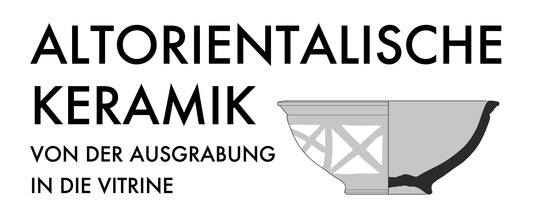
("Ancient Near Eastern Pottery.
From Excavation to Exhibition")
With the help of sherds from the excavations at Isin (Iraq), you can track the path pottery has to tread from the moment of its discovery until its arrival at the museum .
The exhibition was realised within the framework of the seminar
„Scherben bringen Glück! Mesopotamische Keramik von der Ausgrabung bis ins Museum“
in the winter term of 2022/23 under the supervision of Dr. Albert Dietz.
The show case was designed by the following students:
Dennis Busch, Cyrill Dankwardt, Moritz Kellerer, Michaela Klein,
Elena Sher, Moses Simon Montalvo, and Marco Wolf.
We are looking forward to your visit!
---------------------------------------
Notification of 8th February 2023
Donations for the Eearth Quake Victims in the Syrian-Turkish Border Region
The president of the association "SyrienHilfe e.V.", Karsten Malige, asks for donations.
In the very area that has been hit hardest - but which does not receive any help from the Assad regime - the association has numerous assistants, who can and want to help, but who urgently need money.
Those of you who are able to help are welcome to donate to "SyrienHilfe e.V.":
VR-Bank in Mittelbaden eG
IBAN: DE80 6656 2300 0012 1220 12
BIC: GENODE61IFF
SyrienHilfe e.V., Friedrich-Ebert-Straße 25, 76461 Muggensturm; Telephone: +49 7222 3852590
Humanitarian help for Syria: www.syrienhilfe.org
Information also on Facebook: www.facebook.com/Syrienhilfe
or with betterplace: www.betterplace.org/p12586
THANK YOU VERY MUCH FOR YOUR SUPPORT!
----------------------------------------------
Announcement of 24th November 2022
Symposium in honour of Dr. Ursula Calmeyer-Seidl
on Friday, 2nd December 2022, from 1pm - 7.30 pm in the main building of LMU, room no. A022
under the direction of Prof. Adelheid Otto und Prof. Walther Sallaberger
Programme und further Information
-------------------------------------------
Announcement of 18th October 2022
Invitation
to a scientific lecture on the occasion of the termination of the habilitation of
Dr. Kai Kaniuth
in Near Eastern Archaeology
on Tuesday, 8th November 2022, at 6pm c. t., room no. A 021
„Ein Imperium an seinen Grenzen. Neue Forschungen zur Achämeniden-Zeit im Südkaukasus.“
-----------------------------------------
Announcement of 19th July 2021
New Project KALAM within the framework of the Initiative „Global Challenges - Integrating Diverse Perspectives on Heritage and Change“
Das Institut für Vorderasiatische Archäologie der LMU startet unter Leitung von Adelheid Otto ein neues internationales Projekt mit mit dem Ziel, gefährdete archäologische Landschaften im Irak und in Usbekistan zu schützen. In diesen Ländern sind ausgedehnte Gebiete mit Tausenden Kulturerbestätten infolge von Raubgrabungen, Siedlungsbau, Landwirtschaft und Staudammbauten akut gefährdet. Das Projekt „KALAM. Analysis, protection and development of archaeological landscapes in Iraq and Uzbekistan through ICTs and community-based approaches“ wird auf Basis einer Kooperation auf Augenhöhe mit Archäologenkollegen in Iraq, Usbekistan und Italien durchgeführt. Es hat zum Ziel, die archäologischen Stätten zu dokumentieren und in Zusammenarbeit mit der Bevölkerung vor Ort nachhaltige Methoden zum Schutz zu entwickeln.
Es wird von der internationalen Initiative „Global Challenges - Integrating Diverse Perspectives on Heritage and Change“ gefördert, zu der sich die VolkswagenStiftung, die Compagnia di San Paolo in Italien und der Riksbankens Jubileumsfond in Schweden zusammengeschlossen haben, und wurde als eines von acht internationalen Projekten ausgewählt.
The correspondent press release you will find here:
---------------------------------------------------------------------------------------------------------------------------------------------


